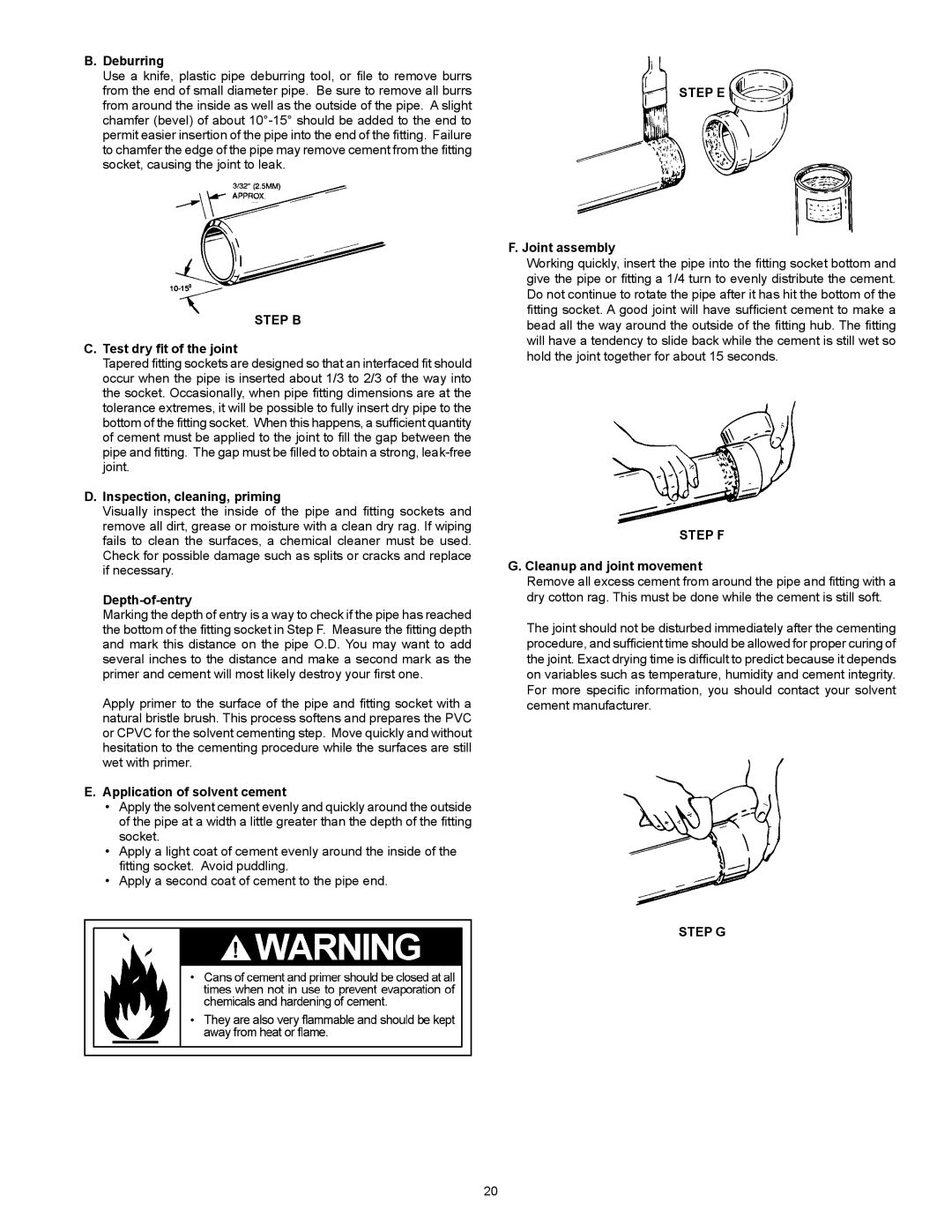GPVH-50, GPVX-50, GPVR-40 Series 102, GPVR-50, 315465-000 specifications
A.O. Smith is a reputable manufacturer of water heating solutions, and their series of water heaters, particularly models 185237-004, 315465-000, GPVR-50, GPVR-40 Series 102, and GPVX-50, exemplify the company’s commitment to innovation, efficiency, and reliability. These models cater to diverse residential and commercial applications, providing users with versatile options tailored to specific needs.One of the standout features of these A.O. Smith water heaters is their advanced heating technology. Many of these models, such as the GPVR-50 and GPVR-40 Series 102, are equipped with high-efficiency gas burners designed to maximize thermal efficiency. This ensures that hot water is readily available while minimizing energy consumption, contributing to reduced utility bills.
Additionally, the GPVX-50 model showcases A.O. Smith's investment in Smart Technology. It features a built-in electronic control that allows for precise temperature settings and enhanced system monitoring. This not only optimizes performance but also increases user convenience, making it easier to manage water heating according to personal preferences.
Durability is another core characteristic of these models. The tanks are often constructed from high-quality materials, such as glass-lined steel, which enhances corrosion resistance and extends the lifespan of the unit. Moreover, A.O. Smith incorporates advanced insulation materials that reduce heat loss, maintaining water temperature for longer periods and furthering energy savings.
Safety is paramount in A.O. Smith's designs. Models like the GPVR-50 and GPVX-50 include various safety features, such as automatic shut-off valves and temperature pressure relief valves. These additions ensure that users can operate their water heaters with peace of mind, knowing that safety measures are in place.
Installation flexibility is another significant advantage these models offer. They are designed to fit into various spaces, accommodating different installation requirements, whether it be horizontal or vertical configurations. Such adaptability makes them suitable for various settings, from residential homes to commercial establishments.
In summary, the A.O. Smith 185237-004, 315465-000, GPVR-50, GPVR-40 Series 102, and GPVX-50 water heaters offer a range of advanced features, technologies, and characteristics designed to enhance efficiency, reliability, and user experience. With a focus on innovation, safety, and durability, these products stand as a testament to A.O. Smith's commitment to delivering high-quality water heating solutions for consumers everywhere.

